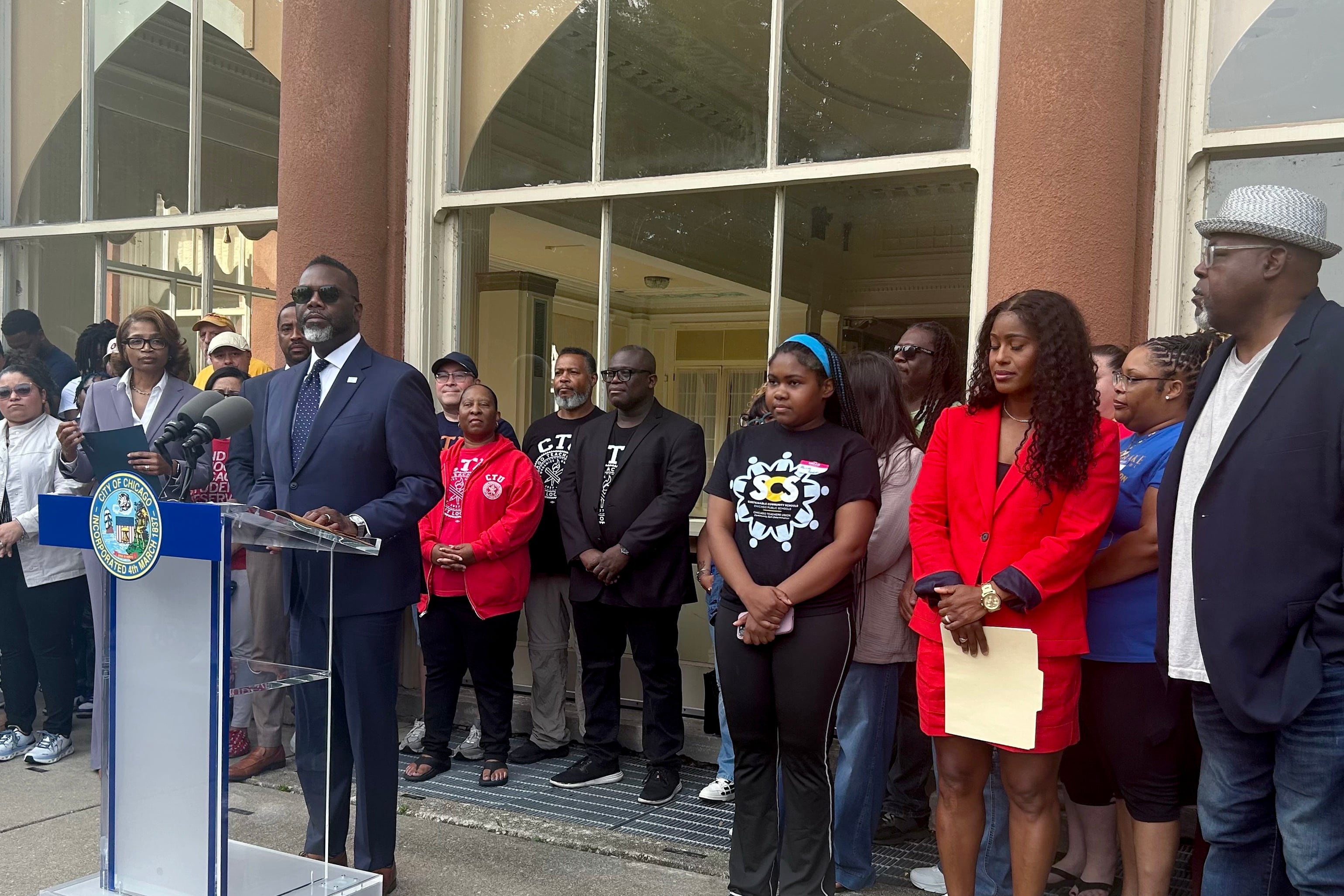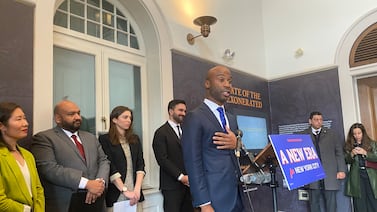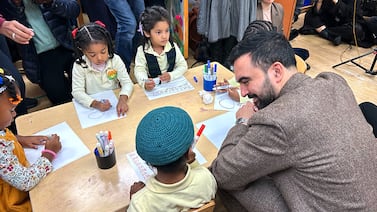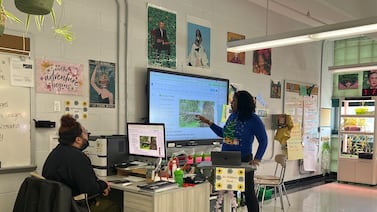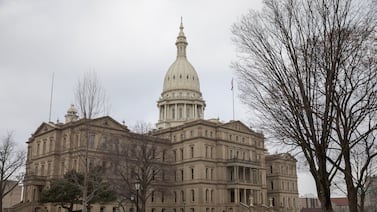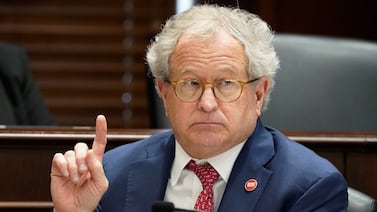Sign up for Chalkbeat Chicago’s free daily newsletter to keep up with the latest news on Chicago Public Schools.
Chicago Public Schools will add 16 schools to a joint initiative with its teachers union that provides campuses $500,000 annually to offer more student and family services, officials announced Monday.
The Sustainable Community Schools initiative has offered after-school programs, parent outreach, restorative justice support, and other services in tandem with community nonprofits at 20 schools since 2018.
The expansion to 36 schools for the 2025-26 school year is part of the new Chicago Teachers Union contract that includes an agreement to grow the number of participating schools to 70 by the end of the four-year deal in 2028.
At a press conference at the South Shore Cultural Center, Chicago Mayor Brandon Johnson and district and union leaders hailed the program’s expansion, even as they acknowledged significant fiscal challenges that make its sustainability uncertain.
The district is gearing up to unveil a 2025-26 budget in the face of a $734 million budget deficit. But officials said they are determined to keep backing the program.
Johnson’s mayoral transition team recommended rapidly growing the number of schools in the program to 200. The mayor used the occasion to make yet another appeal for more state funding for the district — an ask state lawmakers have signaled they are reluctant to accommodate. On Friday, Illinois released new calculations showing CPS will get an additional $76 million in state aid this year, bringing the total to $1.9 billion, slightly more than district officials expected.
“Until our schools become community hubs in every single neighborhood, we won’t see real transformation,” Johnson said, calling Sustainable Community Schools “truly the future of public education.”
A string of pandemic-era evaluations of the initiative have shown mixed results, even as they acknowledged COVID’s disruption of its rollout.
Some schools offered more mental health and social-emotional support to students and moved away from punitive discipline. Others reported slower staff buy-in and communication issues with community nonprofits. Overall academic outcomes were largely in line with those at schools with similar demographics not receiving the extra support.
The 20 schools participating in the program have also lost 15% of their student enrollment since 2018, and a half dozen have lost more than a quarter of their enrollment — a much sharper decline than the district overall experienced.
When asked how the city will track whether the program is paying off for students, Johnson said he wouldn’t measure success based on student outcomes, such as test scores and graduation rates, but rather on the extra staff and programs the schools offer students.
“The schools are successful when every single child has everything they need,” he said.
At Monday’s event, Alicia Anderson, a recent graduate from Fort Dearborn Elementary School on the South Side — one of the initiative’s original campuses — said the program had shifted the campus climate. She said the school now offers more mental health support and chances for students to weigh in on classroom and school decisions.
The initiative “is important because it gives schools the opportunity to put their students first,” she said.
School board member Jitu Brown spoke about the hunger strike and community activism that led to the reopening of the South Side’s Dyett High School in 2015, and which he joined as an organizer.
He said the effort inspired the Sustainable Community Schools program, which has boosted Dyett: The school’s boys basketball won the state title earlier this year, an experience Brown said he wants all Chicago students to have. Its latest four-year graduation rate of 87% is above the district average of 81% and close to the state average of 88%, using the state’s graduation rate calculations.
Officials said the district and union chose the 16 schools joining the program this school year using the city’s hardship index, which factors in poverty, homelessness, and other factors. They invited almost half of the district’s roughly 500 campuses to apply.
Officials said they sifted through 87 applications to choose the new schools, seeking a mix of majority Black and majority Latino schools in neighborhoods that experienced historic disinvestment. Officials did not say which community organizations will partner with the 16 campuses; no representatives of these schools spoke at the Monday press conference.
“It’s an investment in our students,” said interim CPS CEO Macquline King. “It’s an investment in our communities. It’s an investment in our future.”
Mila Koumpilova is Chalkbeat Chicago’s senior reporter covering Chicago Public Schools. Contact Mila at mkoumpilova@chalkbeat.org.

